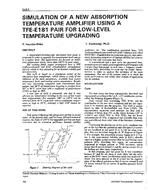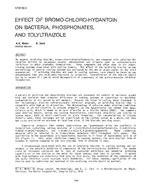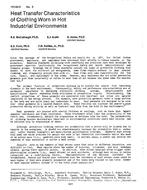Hourly building energy simulation models, such as DOE-2 and BLAST have proved to be an effective method of simulating the energy use in new buildings during the design stage. Such models are increasingly being used to evaluate retrofits in existing buildings and for purposes of demand-side management (DSM) evaluations. However, little agreement exists among the users of the models as to how to calibrate the simulation to measured data from a building, or even simpler matters such as the impact of using measured weather data in the simulation vs. weather data from an average year. Evaluates the impact of using measured weather data vs. TMY weather data for a DOE-2 simulation of a large institutional building. The procedure relies on specially prepared graphs including carpet plots and box-whisker-mean plots. The use of these graphs allows for fine differences in hourly dry-bulb temperatures, and allows specific humidity to be assessed along with the energy impact of using the different weather files. Results from the application of the procedure to simulated energy use using TMY weather data and measured weather data that have been “repacked” into TRY formats are compared to actual energy use for a building located in central Texas. Specific recommendations concerning the impact of the use of measured weather data and the use of these analysis aids on the calibration of the DOE-2 program are included.
KEYWORDS: year 1995, weather, data, calculating, new buildings, computer programs, computers, modernising, measuring, comparing, graphs, temperature, humidity, energy consumption, USA, calibrating, case studies
Citation: ASHRAE Trans. 1995, Vol.101, Part 2, Paper number 3931, 558-576, 11 figs., 2 tabs., refs.
Product Details
- Published:
- 1995
- File Size:
- 1 file , 2.1 MB
- Product Code(s):
- D-17134


